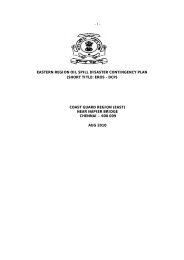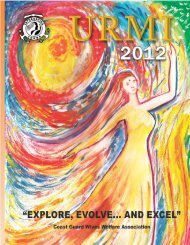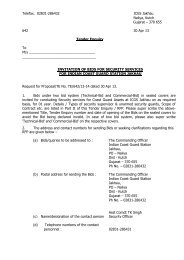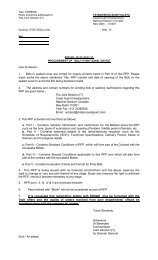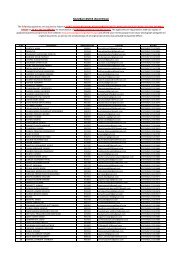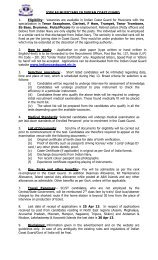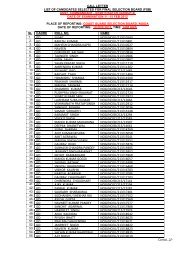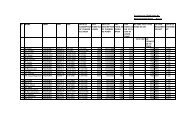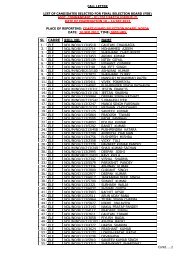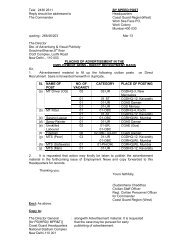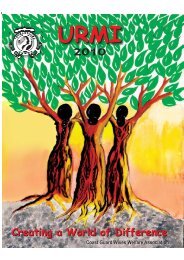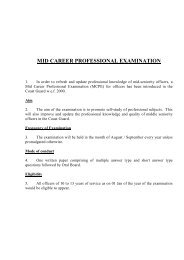Jan 2009 edition - Indian Coast Guard
Jan 2009 edition - Indian Coast Guard
Jan 2009 edition - Indian Coast Guard
Create successful ePaper yourself
Turn your PDF publications into a flip-book with our unique Google optimized e-Paper software.
<strong>Jan</strong> <strong>2009</strong> Vol X Issue 1<br />
Shoreline Assessment process<br />
During a spill response, shoreline assessment forms<br />
an integral component of the response organization.<br />
Shoreline assessment teams are often made up of<br />
representatives from governmental agencies, the<br />
responsible party, and other specialists. Members of the<br />
team should be trained and knowledgeable in their roles,<br />
which include: shoreline assessment coordinator; shoreline<br />
assessment team Leader; and team members. Shoreline<br />
assessment teams should collect the data needed to<br />
develop a shoreline clean-up plan that maximizes the<br />
recovery of oiled habitats and resources, while minimizing<br />
the risk of injury from clean-up efforts. Consideration<br />
should always be given to the potential for human<br />
exposure, by direct contact or by eating contaminated<br />
seafood, the extent and duration of environmental impacts<br />
if the oil is not removed, natural removal rates, potential<br />
for re-mobilised oil to affect other sensitive resources and<br />
likelihood of clean-up to cause greater harm than the oil<br />
alone. Information from these assessments must meet<br />
the requirements of the clean-up operation, being both<br />
timely and of uniform quality and content. Finally, the<br />
teams must coordinate their field activities with the cleanup<br />
managers working in the areas being assessed. This<br />
by IMO and the USCG that are aimed at providing practical<br />
and technical information to carry out shoreline surveys.<br />
Shoreline Surveys<br />
The Objective of the shoreline survey is to collect data<br />
on shoreline types, oiling conditions, and ecological and<br />
human-use resources for specific segments. The survey<br />
team should reach an agreement on clean-up<br />
recommendations for specific segments and also confirm<br />
that recommendations are effective and beneficial to the<br />
environment.<br />
The shoreline assessment team during their survey<br />
should carry out following:<br />
• Confirm segment boundaries.<br />
• Conduct survey to identify shoreline types and<br />
extent of oiling.<br />
• Describe the shoreline characteristics, surface oil<br />
conditions, buried oil conditions, and special<br />
considerations (ecological, recreational, cultural) using<br />
standard terms and codes.<br />
• Sketch the segment, if appropriate, focusing on<br />
the oil distribution and special considerations.<br />
• Note presence of submerged oil in near shore<br />
zone for spills of heavy oil.<br />
• Log and locate all photographs taken, and note<br />
the objective of each photograph.<br />
• Collect oil and/or sediment samples based on<br />
identified needs.<br />
ensures that all operations are conducted safely and that<br />
important information is exchanged. Several guidelines<br />
and studies on shoreline assessment have been developed<br />
• Discuss and agree on clean-up recommendations<br />
and priorities.<br />
• Complete the surveys each day in time to meet<br />
reporting deadlines.<br />
4



